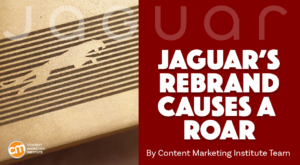
Setting goals in your agency is an important step to help it grow. Goals are the backbone of any successful business. They help you set direction, think creatively, and stay focused.
Some agencies might prefer OKRs, while others might find EOS a better fit for them. The choice really depends on what you need and what’s most important to your business. Continue reading how OKRs and EOS can help your agency build sustainable growth and profitability.
What is EOS?
EOS or the Entrepreneurial Operating System helps you start, manage, and scale your business to the next level. It’s applicable in any industry or business model.
The EOS framework provides you with the tools and concepts to create the right structure for your agency. It helps you:
- Operate your agency more efficiently
- Analyze your current situation
- Make informed decisions
- Implement necessary changes
- Execute plans faster
EOS helps you set goals and achieve them, improve your leadership skills, build a team around your vision, use the right tools and create strategies for building a successful agency.
What is EOS made up of?
Image source: eosworldwide.com
The EOS framework consists of six steps that are all interconnected, and each step has a unique purpose in the whole cycle:
- Defining your business vision, its mission, goals, and how to achieve them while keeping your team on the same page
- Understanding data behind your actions to get an objective view of the strengths and weaknesses of your business
- Improving internal processes with documentation and setting up procedures to run your business efficiently
- Holding regular meetings (Traction) to keep your team on track and working towards a common goal, improving their discipline, accountability, and engagement
- Defining and prioritizing all issues to start solving them
- Creating a team that resonates with your core values and defining their roles and responsibilities in your company
Choosing the right framework enables you to focus on achieving your business goals faster. These are the steps that will help you and your employees work more productively.
What are OKRs?
Image source: mint.intuit.com
OKRs or Objectives and Key Results is a goal-setting framework that helps you implement and execute your business strategy. It helps you focus on specific objectives, monitor your progress, and track the outcome to drive the sustainable growth of your business.
Companies that use this framework are known for their transparency, high levels of engagement among employees, and frequent innovation. OKRs framework consist of three steps:
- Defining the objectives that will lead to your desired outcome
- Defining key results to measure your progress towards the objectives
- Creating initiatives or tasks to achieve key results
Never stop measuring your growth. When you do, you’ll miss out on the lessons you can learn. By analyzing your results, you can pinpoint what worked and didn’t work so well, so you can formulate new strategies based on your assessment. It is necessary to ensure that your efforts are successful in the future.
OKRs vs EOS: What are the main differences?
The EOS and OKR frameworks have a lot in common, making them a great pair for a healthy business. They’re both goal-based frameworks you can use to improve your performance management, but there are also some differences between them. Continue reading to find out more.
OKRs vs EOS: Approach
EOS provides you with a set of unique tools and instructions to help you establish a scalable and high-performing business model. These tools and instructions facilitate teams’ workflow, making it easy for company leaders to monitor progress and execute action plans. EOS improves your internal processes and optimizes your teams’ performance to help you achieve your desired results.
OKRs are used for goal management strategy but are not sufficient on their own. OKRs align conflicting priorities and provide focus, but many businesses prefer a broader system to organize their business activities.
OKRs vs EOS: Timeframes
With OKRs, you get total freedom in how you set and evaluate your objectives. Instead of setting timeframes and milestones upfront, OKRs allow you to freely create your long-term objectives and short-term goals at any time.
EOS is a framework for setting goals and tracking progress towards them. It asks companies to define their objectives and timeframes in advance and continually monitor their progress towards these targets with quarterly and annual sessions.
OKRs vs EOS: Audience
OKRs are versatile. You can use it within all organization types, from startups to nonprofits, or even for your personal goals. On the other hand, if you are a business leader or entrepreneur that wants to focus on a specific business model, we recommend using the EOS framework.
Can you use OKRs along with EOS for better results?
Both OKRs and EOS are similar because they are goal-driven and time-sensitive, but OKRs are more flexible, and you can implement them in the EOS framework.
OKRs can be a great way to set specific goals, while EOS is a method for putting a laser focus on a few key tasks that will allow you to meet your company’s strategic objectives. These two approaches have different benefits that can go hand in hand for greater success.
Examples of applying OKRs and EOS in practice
Objectives and key results (OKRs) are a great way to set specific, measurable, achievable, relevant, and time-bound goals. Many different industries use OKRs as a management technique for achieving business objectives.
OKRs example
1. Business Objective (O):
- Increase brand awareness by 50% in 2022.
2. Key Results (KRs):
- Grow Instagram followers to 15,000 by the end of November
- Increase the number of website visitors by 30,000 by the end of Q4
- Grow mailing list subscribers to 20,000 by the end of 2022.
Once you’ve identified your key goals you can start thinking about the ways to achieve them. These can include adjusting your social media plan, improving client communications, considering new effective email marketing strategies, improving website design, etc.
EOS framework example
Embracing the EOS framework lets everyone in your team assume responsibility for their actions, leading to more efficiency and productivity in the workplace. It also provides a holistic view of each project or initiative, which allows faster decision-making.
For example, if you are a member of the leadership team in your company, you can organize the Level 10 meeting, which is a core element in the EOS framework. Level 10 meetings start and end at the same time and on the same day once a week, covering the same agenda each time.
These meetings last for 90 minutes, and their goal is to help you:
- Identify and prioritize 3 key issues your agency is facing
- Brainstorm and implement solutions for these key issues
- Create a roadmap to ensure your team stays on track
Recommendations on selecting OKRs or EOS for agency owners
OKRs help you define your goals, track and measure your progress, and reassess based on your results. It helps your entire team focus on what matters the most, keeping them aligned with common goals and letting them reach their full potential.
On the other hand, EOS is a proven process that helps companies build sustainable growth and profitability. Its unique approach to goal-setting puts employees and the company itself on the same page. EOS combination of team accountability, consistent measurement, and ongoing employee development improves employee performance and increases business results.
Each framework has its own merits, and it’s important to focus on what’s best for your company. However, it’s also essential to take the time to examine each option, so you can pick out the framework that can help you succeed. Choose the one that best fits your needs and your current situation.
We’ll help you choose the right framework for your company
OKRs and EOS frameworks ensure your company is moving in the right direction, no matter what industry you’re in. These frameworks keep every team member accountable because they know exactly what’s expected of them. More importantly, these frameworks provide specific feedback on how to improve performance which can be difficult to do otherwise. If you want to find out more, feel free to contact PSD to HTML team today!




